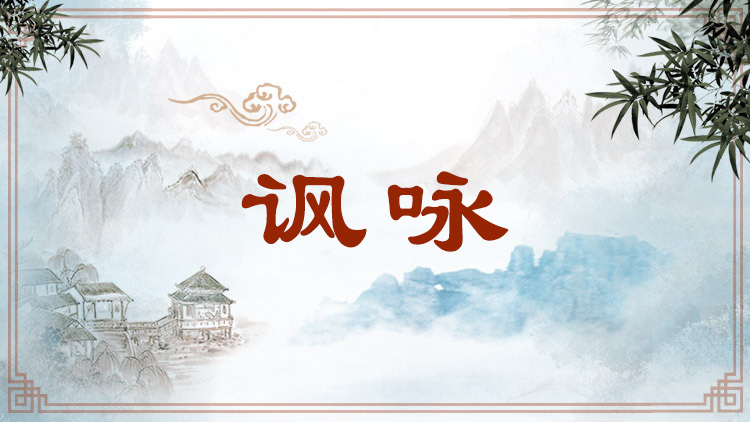
指的是中国古代阅读、欣赏诗歌的方法。讽,是抑扬顿挫地诵读;咏,指的是吟唱、歌唱。“讽咏”合起来就是指,诗歌要通过反复诵读、吟唱,逐渐感受其节奏、声韵,揣摩其内涵、情感,进而把握作者的作诗用意,甚至产生自己的见解。讽咏的方法,与中国古代诗歌具有较强的音乐性密切相关,不仅可以抑扬顿挫地诵读,而且可以用一定的旋律吟唱出来。
This term refers to the proper way of appreciating classic Chinese poetry in ancient times. Specifically, when reading a poem aloud, it was supposed to intone a poem with cadence; namely, by following a pattern of rising and falling tones with pauses in between. Through repeated chanting and recitals, they captured the rhythm, rhyme, hidden meaning and sentiment of the poem and finally understood the core message conveyed by the author. On that basis, they might even be able to form an interpretation of their own. Chanting played a vital role in poetic appreciation largely due to the musicality of classic Chinese poetry. Readers not only read cadence but sang melodiously as well.
引例 Citations:
◎先须熟读《楚词》,朝夕讽咏,以为之本……以李、杜二集枕藉观之,如今人之治经,然后博取盛唐名家,酝酿胸中,久之自然悟入。(严羽《沧浪诗话·诗辨》)
先要熟读《楚辞》,每天早晚诵读、吟唱,以此作为基础……将李白、杜甫的诗集放在枕席边随时阅读,就像今人研读经书一样,而后再广泛阅读盛唐时期的名家作品,在心里反复揣摩体会,时间长了自然就会领悟。
First of all, one should make it a basic practice to learn the Odes of Chu by chanting and singing the odes every morning... and place the collected poems of Li Bai and Du Fu beside one's pillow for the convenience of reading at any time, just as scholars of today study non-poetic classics. After that, he should widely read renowned works of the flourishing period of the Tang Dynasty. When he has ruminated on those poems, he will naturally become enlightened. (Yan Yu: Canglang's Criticism on Poetry)
◎曰国风,曰雅颂。号四诗,当讽咏。(《三字经》)
《诗经》中的《国风》、《大雅》、《小雅》和《颂》,加在一起叫作“四诗”,应该经常诵读、吟唱。
The "Ballads from the States," "Major Court Hymns," "Minor Court Hymns" and "Hymns of Extolment" from The Book of Songs, the four are collectively known as "the Four Poems." They are meant to be chanted and sung frequently. (Three-character Classic)
推荐:教育部 国家语委
供稿:北京外国语大学 外语教学与研究出版社
责任编辑:钱耐安





